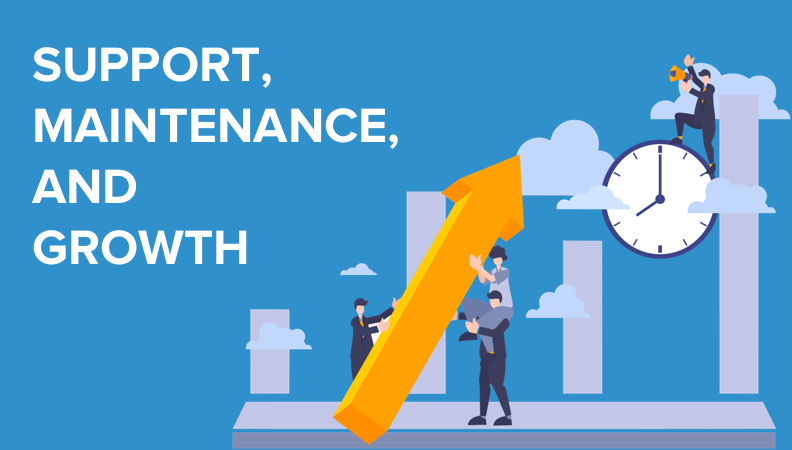- Solutions
- For Industry
- By Need
- Products
- VarbaseEnterprise CMS Distribution for Drupal
- Uber PublisherEnterprise Digital Media Platform Builder
- VardocDrupal Knowledge Base Platform
- Campaign StudioOpen Marketing Platform - by Acquia
- Open SocialSocial Business Platform - by Open Social
- Services
- Strategy
- Design
- Development
- Migration
- Support and MaintenanceSupport and Maintenance
- DevOps
- Digital Marketing

Datasheet

- Clients
- Ideas
- About
- Contact Us

10 Drupal Trends to Watch in 2025

Drupal has evolved significantly from it's initial developer-focused content management system. In 2025, it's entering one of its most notable moments yet, characterized by low-code content creation, AI-driven personalization, out-of-the-box website templates, and enterprise scalability.
This shift reflects Drupal's commitment to accessibility, innovation, and performance as it moves away from legacy systems like Drupal 7 and marches toward the future.
Here are 10 key things to watch for in 2025:
1. Drupal CMS 2.0
Drupal CMS 2.0 is planned for Q3 2025, October, as a major release. It succeeds Drupal CMS 1.0, which was launched in January 2024, and introduces enterprise-focused features:
- Role-based Dashboards: Tailored views for different user roles for better usability.
- Workflows and CRM Integration: Content and customer relationship operation automation.
- Content Hubs: Unified content management for multi-site deployments.
This release positions Drupal as a no-code/low-code platform, opening up the barriers to non-technical users and meeting enterprise needs.
2. Experience Builder (XB)
Experience Builder is currently in alpha with a Q2 2025 beta and a final release by DrupalCon Vienna in September 2025. It features:
- A WYSIWYG, drag-and-drop interface using React components to preview responsively.
- Versioning and bulk publishing functionality to facilitate content management.
- Support for multiple languages and migration plans from existing tools like Layout Builder and Paragraphs.
It is designed to make Drupal accessible to marketers and content creators, not only developers.
3. AI Integration
AI is a growing trend within Drupal with its modular design conducive to both cloud and on-premise environments. Some of the key developments are:
- Over 30 AI agents, up from an initial 5, for SEO, content personalization, and semantic search.
- AI Agents for Experience Builder, recently demonstrated in conferences, allow for on-demand composition of design components with refinement capabilities.
- Site migrations powered by AI are being developed to scale for large business.
The business is headed in this direction with its automation efforts, making Drupal a contender for bespoke user experiences.
4. Site Templates and Drupal Marketplace
Site Templates are pre-created, modular setups that combine recipes, themes, Experience Builder components, and demo content.
- Some templates are expected by DrupalCon Vienna in September 2025 and hundreds more from community backing.
- Automated deployment will be in Q3 2025, reducing the time to install new sites.
The Drupal Marketplace, in discussion, has the potential to be released in Q4 2025, with open-source as well as commercial templates, and a potential revenue-sharing program. This can make an active ecosystem, making Drupal available to more new users.
5. Headless CMS and Decoupled Architecture
Headless CMS and decoupled architecture support in Drupal continues to expand, with integration possible for frontend frameworks such as React, Angular, and Vue.js. This is reflected, as mentioned by several sources, to enable greater flexibility for content delivery on multiple platforms to meet the needs of contemporary, API-oriented web development.
6. Increased Security and Accessibility
Security is also of utmost importance, with features like multi-factor authentication and regular updates making Drupal extremely secure. Accessibility features keep up with WCAG standards, and Drupal becomes accessible to all. This is necessary in order to gain user trust for enterprise users.
7. Cloud-Native Scalability
The shift towards cloud-native deployments increases scalability and efficiency, meeting the needs of high-traffic websites. The movement reflects broader industry changes towards cloud infrastructure, keeping Drupal in game.
8. Performance Optimization and Sustainability
Performance optimization for reduced energy consumption is a focus for Drupal, aligning with sustainability goals. While less prevalent, the trend is gaining traction with growing environmental consciousness in technology.
Also Read: Sustainability in Web Development: Creating Green Websites with Drupal
9. End of Drupal 7
Support for Drupal 7 will be ending in 2025, which has spurred migrations to Drupal 10 or 11. It is a significant shift as it might be difficult for some users due to the expense and complexity of upgrading, but for others, it is an opportunity to utilize the newer features. There is a community dedicated to assisting with this transition, and features AI-powered migrations.
10. Drupal 11 Features
The mid 2024 to late 2024 released Drupal 11 includes features like improved Symphony integration, headless CMS framework improvements, PHP innovation, and cyber standards. Drupal 11 also includes design pattern cutting-edge features, smart applications, testing automation, and improved accessibility emphasis. It plans to integrate IoT devices and smart chatbots in the future and implement PHP 8.4 for performance improvement.
